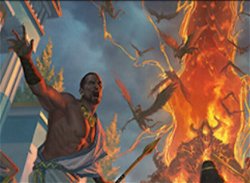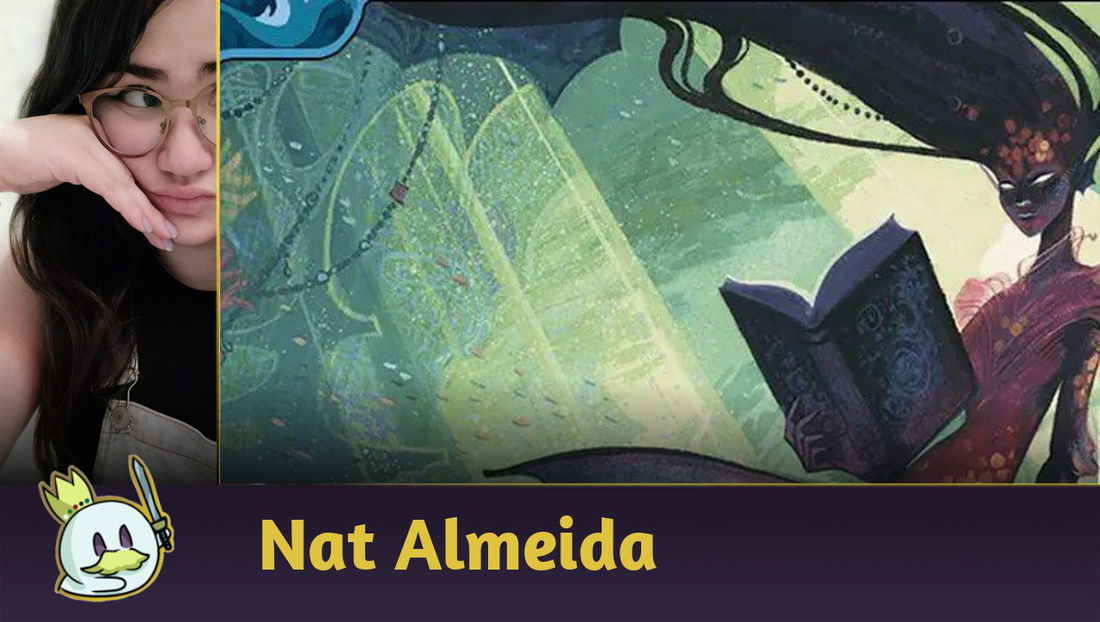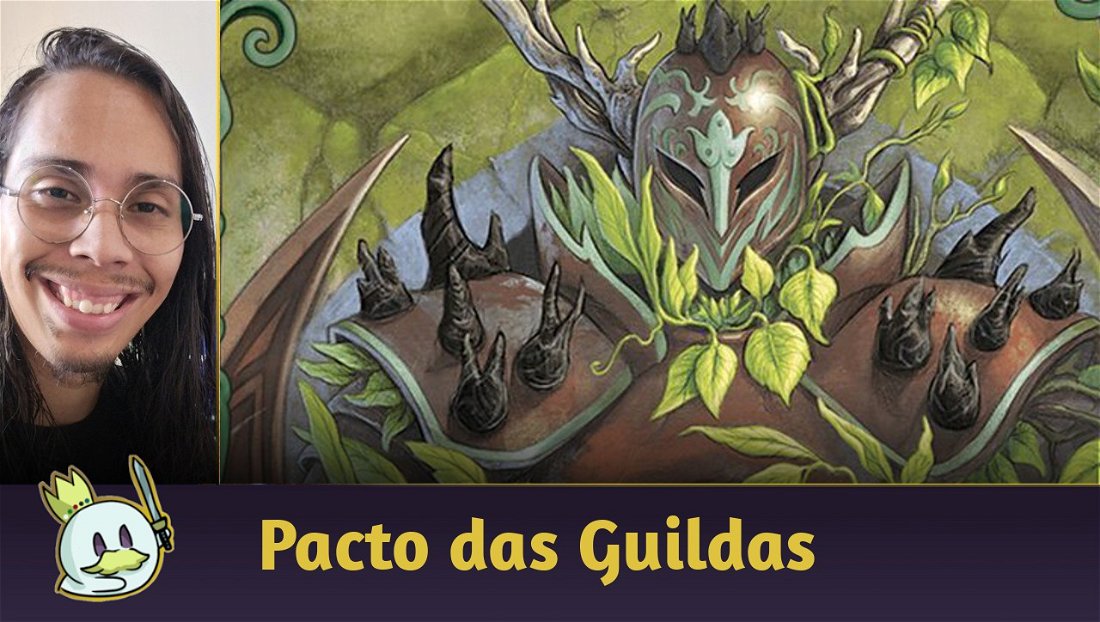Modern Horizons 3 has already left its mark: the format's Metagame already has several new decks, cards from the expansion have appeared in more and more strategies and the competitive landscape begins to take shape as archetypes solidify.
Among them, an old strategy has returned: Through the Breach, previously played on an Izzet core with Emrakul, the Aeons' Torn returns to the Metagame with a new Gruul version thanks to the support Eldrazi received with MH3, which gave much more consistency in completing the combo in these colors as well as an efficient and versatile backup plan.
In today's article, we delve deeper into Gruul Through the Breach and present a Sideboard guide to the main new matchups in the Modern Metagame post-MH3!
The Decklist
This is the standard list that has appeared in Magic Online Leagues, and the one I used over the last week to produce this article.
One point that I really like about this version is how straightforward, fast and consistent it manages to be: all your cards have a purpose, your mana is made to play quickly and the amount of top filtering is absurdly high, helping to find the combo very early while also finding some answers and/or ways to hold the game.
Of all the Through the Breach decks that have emerged Modern, this is certainly the best version I've ever played and should remain one of the format's main competitors for some time.
Maindeck

Our combo.
Ideally, we want to use Through the Breach early to get Emrakul, the Aeons' Torn into play and attack with it, destroying all the opponent's permanents, and the more powerful Eldrazi titan can still be used to power Ugin's Labyrinth, where it has an interaction with our other wincondition.
Ulamog, the Defiler may not have the same efficient built-in protection as Emrakul, but it has powerful interactions with our other cards, especially with Ugin's Labyrinth which grants Annihilator equal to the mana value of the permanent exiled with it, which could be up to 15 if Emrakul is exiled. It may be a bit of a win more and perhaps the most flexible slot in the deck, but I like the consistency of six creatures capable of wiping the opponent's board.

Devourer of Destiny offers strong top filtering if it comes in the opening hand, it feeds Ugin's Labyrinth to generate two mana and its cost is achievable in this list, where we can use it as unconditional removal while we have a 6/6 in play.
Thought-Knot Seer can be cast as early as the second turn, offers information about the opponent's hand and is a threat on its own that helps if our combo plan fails for some reason, allowing us to play with more attrition alongside The One Ring and other cards.

Talisman of Impulse helps us accelerate mana and provides us with access to colors when we need. There are hands where our ideal first turn play involves Ugin's Labyrinth followed by Talisman of Impulse and using the green mana to cast Ancient Stirrings finding, ideally, The One Ring or Thought-Knot Seer.
All is Dust is a sweeper that also feeds Ugin's Labyrinth while clearing the opponent's board by the time we reach the seventh mana, being our main removal and a resource that, often, makes us extend the game to cast Devourer of Destiny and Ulamog, the Defiler.

Ancient Stirrings is the most efficient cantrip of all time if your deck is colorless. Looking at the top five cards for just one mana makes it easy to find the piece you need. It basically sets up the combo when played alongside Kozilek’s Command to find Through the Breach.
Kozilek's Command is a little bit of everything we want: Ramp to play our Eldrazi, removal, graveyard hate and, most importantly, filtering which allows finding the exact card you want as the game goes on - ideally a Through the Breach. By far the best new card on the list.
The One Ring offers us, at least, an “extra turn” and three draws. Furthermore, its protection is essential against Ruby Storm and other archetypes, it leaves us immune to discards during a crucial turn and the extra time it offers us is usually enough to finish the game

Eldrazi Temple offers two mana to cast Eldrazi spells, being essential for an early Thought-Knot Seer or to speed up our bigger drops, while several cards on our list interact so well with Ugin’s Labyrinth that it practically becomes the deck's core.

Grove of the Burnwillows and Karplusan Forest offer access to the colors we need and also generate colorless mana, basically giving us all the support that Shock Lands and Fetch Lands give to other archetypes.

Gemstone Caverns is an “extra mana” if it comes in the starting hand on the draw, but if it doesn't, it works as an extra colorless mana in a functional land drop during the game.
Boseiju, Who Endures deals with several troublesome cards in the current Metagame, helps slow down the mirror, destroys specific hates and even serves as a green land drop for Ancient Stirrings and Thief of Existence.
Sideboard

Gemstone Caverns enters any game where we are on the draw, usually replacing a Karplusan Forest. It is necessary to avoid “wasting a turn” on this deck, which has been essential in the current Modern Metagame where Ruby Storm and Bant Nadu are absurdly fast.

Thief of Existence deals with a dozen troublesome permanents from the current Metagame while actively interacting with our attrition plan. Among the targets where we want this card, we have Necrodominance, Teferi, Time Raveler, Wrenn and Six, Agatha's Soul Cauldron, Simulacrum Synthesizer and, in some cases, Fable of the Mirror-Breaker.
Dismember is our targeted removal for games where we need to quickly deal with certain threats. Typically, it comes in against Energy for Guide of Souls, Yawgmoth, Bant Nadu, and Eldrazi.
Null Elemental Blast deals with almost everything that matters against Domain Zoo, but also works to counter Nadu, Winged Wisdom and other key cards like Wrenn and Six, Omnath, Locus of Creation or Teferi, Time Raveler.

Chalice of the Void deals with Living End, decks with a lot of one-drops, and we can also put it on the Sideboard to play it with X = 2 against Ruby Storm.
Trinisphere also comes in against Storm, but it works in any matchup where we want to punish the opponent's low-cost drops or tax Cascade costs and/or free spells.
Disruptor Flute deals with several key cards, has become a staple and is essential to delay an opponent's turn on certain cards or to prevent activated abilities that would win the game from being used. It is extremely versatile and can play in several matchups
The Stone Brain is essential for dealing with combos, especially those that don't have a good plan B, such as in Bant Nadu.
Sideboard Guide

It's worth noting that Gemstone Caverns is a side-in whenever we're on the draw, and it always replaces a copy of Karplusan Forest. All matchups in the guide below must consider the possibility of making this exchange when we are the starting player.
Boros Energy
IN

OUT

Ruby Storm
IN

OUT

Bant Nadu
IN

OUT

Living End
IN

OUT

Necrodominance
IN

OUT

Conclusion
That's all for today!
If you have any questions or suggestions, feel free to leave a comment!
Thanks for reading!














— Commenti 0
, Reazioni 1
Diventa il primo a commentare